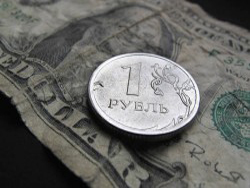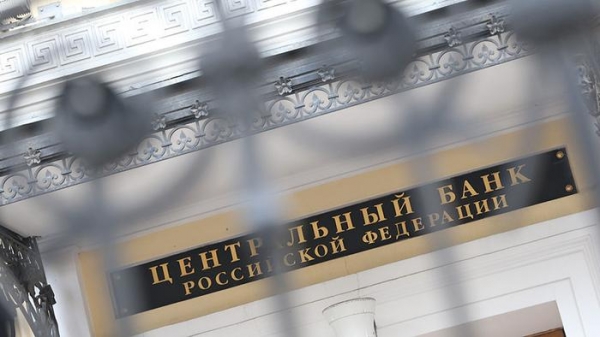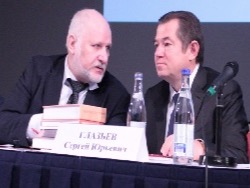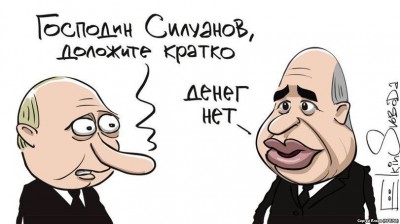
On the stability of the Russian economy is much discussed. In April, hosted the fifth economic forum. Addressing the seminar, first Deputy Chairman of the Bank of Russia Ksenia Yudaeva listed risks, it is estimated that economy will be.
Reporting to the financial elite their vision problems, first Deputy Chairman, I think, out of modesty marked only the second risk banking per se. As old as the world, the truth about “the log in your own eye” she would be very useful. “Vision chair” of the problem includes three types of risk in our economy for the future: risks related to the situation in global markets; measures of the Bank of Russia on reduction of currency risks in the financial system and the economy as a whole and the relationship of monetary policy and financial stability in the current Russian macroeconomic conditions.
Let us leave aside global markets with our financial tools we can not help you. Let’s talk about the main – about how capable our main Bank help bring the dynamics of the economy.
Two weeks ago, the Federal state statistics service, as expected, was otchitalsya about how we live-can. With his characteristic deadpan, he showed that the return on assets of our participants of the market of goods and services amounted in the reporting period – do not faint – of 2.5 %. In fact, where is there to fall, you ask, if in Europe this indicator rarely exceeds 4 %? And here is why.
Whether we like it or not, the elite we now have. It is those who owns huge production capacity. Huge plots of land. And speculating in his office our money, claiming it is a commercial Bank.
Knowledgeable business Russian economists immediately I will correct, not industrial production, which is inexorably declining, not the village, which, despite its natural vitality, cannot resist the indifference and arbitrariness of the officials, and they, more than a thousand offices across Russia with the prosaic name of “so-and-so Bank”, have become “the main beneficiary” the ongoing economic reforms.
You say I overreacted? Alas. Registered from 1 January of the current year thousands of banks almost two hundred – and even with foreign participation. That is, officially take away our national treasure, or the money received from selling it, far beyond our own borders.
Moreover. As reported by Ksenia Yudaeva, the current share of corporate lending in foreign currency is about 40 %. What does it mean? This means that getting a loan rubles from Bank of Russia, commercial banks immediately turn them into dollars. While limiting their own lending opportunities, but… of course, getting the opportunity to fuse the dollars abroad. What they’re doing. Therefore, Philips first Deputy Chairman that “neither banks nor borrowers apparently, there is no clear understanding of what the difference in interest rates between the rouble and hard currency borrowing reflects currency risk” seems naive. For current bankers a much greater risk to miss the opportunity of dollarization. Even after the 2008 crisis, they continued to lend in foreign currency construction and real estate market, whose monetary income is just not there.
“The significant level of dollarization (or valorisatie) deposits, – says Ksenia Yudaeva, – increases the risk of a shortage of foreign currency liquidity”. Put simply, raises the price of dollar in Russia.
Bad? Of course, bad. But to understand how this is bad, we must learn to clearly separate the Declaration of our “commanders of production” and the reality that in our country, yet do not intersect.
Here’s a paper “Report on monetary policy No. 1” dated 13 March this year: “Monetary policy is a part of the state economic policy aimed at improving the welfare of Russian citizens (which is great! – E. P.). The CBR implements monetary policy within the inflation targeting regime, and its priority is to ensure price stability, that is achieving consistently low inflation (And that’s great, too! – E. P)… Monetary policy affects the economy through interest rates, the main parameter is the key rate of the Bank of Russia”.
This is the Declaration of intentions of the Bank of Russia in the past and, accordingly, the current year. Thus, as a matter of pride, the same document reports that the Central Bank gives to the growth of money from the Treasury at 11% per annum.
Without comments it is clear that if the Bank of Russia provides liquidity to commercial banks under this percentage, those, in turn, cannot grant a loan to the enterprise at lower interest rates: the appetites of our homegrown bankers was formed in 90-e years when interest was measured at the times. And who in Russia profitability reaches double figures?
“Mineral extraction”, of course. “Petroleum products” and “khimprominvest”, which is also easy to understand. And except metallurgy and manufacture of metal products, all other areas of our activity, determined by including the return on assets of the production, alas, did not reach double digits.
And now to answer the question of whether your enterprise is receiving on invested ruble ten kopeks a year in profit, to borrow a ruble, paying for it annually 15-25 cents taking into account margin of a commercial Bank that will give you the ruble?
New statistics gives impetus to the “old” reasoning about why our economy with the world’s best domestic sources for growth, “yellow beak Agape”, is waiting for foreign investors and kisses their hands. After all, to borrow abroad under 4-5 % is not under 15-25 %.
British Reuters notes that “the fall in oil prices and the recession in the Russian economy has led to a flourishing of sophisticated schemes to hide problems in the banking sector, leading ultimately to the withdrawal of assets and the flight of bankers”. Standard & Poor’s found that the volume of requirements of the Russian banks under letters of credit with non-residents over the past year increased 5 times and reached about 250 billion rubles.
Their own rubles we have not because we can’t get them to print. How much to inject liquidity into the Russian economy are determined not Putin with Medvedev, the IMF. “We are members of the IMF signed its Charter, and just stupid to follow instructions. But it is unlikely that management at the Central Bank in the current situation, openly to confess the real reasons for this policy”, – says well-known Moscow analyst Mikhail Khazin in his forecast for 2016.
I will not argue. Especially because my interest is much more modest: I want to understand why the main regulator of financial activity in the country said that there preserves the stability of the Russian ruble – that is, fighting inflation, and last year we took in global currency stability rating the last.
But the sharp rise of the dollar under the Russian sky scares even the Western economists. London Reuters expresses concern that “the slowdown in the industrial sector of the Russian Federation increased in March 2016 amid renewed negative dynamics of production volumes at Russian refineries and stagnant demand.” This is evidenced by the results of a survey conducted by the international Finance Agency Markit. But Deputy Prime Minister Arkady Dvorkovich claims that a weak ruble helps in stabilizing the Russian economy and provides support to exporters. The Chairman of the Bank of Russia Elvira Nabiullina and does believe that “the weakening of the ruble led to the growth of competitiveness, which is supporting such industries as agriculture, food, chemical and mining industry”.
What is a “floating” ruble de facto? Even if not to take into account speculation when banks sell currency at the highs and buy on lows, as is done very often associated with the Central Bank, the bankers, the profitability of investments in dollar scheme today, bought – tomorrow sold, about 100 %. Hand on heart, be you a banker, you certainly wouldn’t be “cool bucks”, and would use Bank assets to invest in suffering from “starvation” of the Russian industry? At 5% per annum, to kill Western banks-competitors? Getting liquidity from the Central Bank at 11 %? Realizing that put “long money” in his native country?..
I’m not kidding – what a joke, when even for “their” economist (Samuel Ages, Markit) it is clear that “the first quarter brought frustration to the Russian producers of goods … If the current slowdown in the market will continue in the next few months, the company will follow the Bank of Russia, which may give some stimulus to revive the economy are not efficient enough”…
And maybe not give.
Can’t resist the quotation: “Such an outstanding result cannot be explained naked incompetence. It can be received only consciously, – says Mikhail Khazin. And for him there are two explanations.
First, the leadership of the Central Bank is in close ties with the corrupt leaders of the largest (including state-owned) banks, which purposefully increase the amplitude of exchange rate fluctuations for the purpose of obtaining maximum profit.
From the point of view of the law, it is a crime. Second, you need to pay attention, when there was devaluation. In just a few months after the US stopped the issue of the dollar. That is, the global dollar system began to experience liquidity problems. And increased volatility of the ruble, of course, caused an increase in the outflow of capital (i.e. increased demand on the dollar) that supported this very system”.
Spot on.
And chief financial strategist of Russia is its Central Bank – us comforting prediction: “weakness in domestic demand will be the main factor reducing inflation in the period of 2016-2017 years. Slower growth in consumer prices will also contribute to a cost reduction of manufacturers and the gradual reduction of inflation expectations. …The key rate will be determined taking into account the effect on monetary conditions reduce the structural liquidity deficit and a possible transition to the structural surplus liquidity in the large-scale spending from the Reserve Fund to cover the budget deficit”.
Between us, mere mortals, saying, “with money and the fool can.” And try it without opening the stash for a rainy day…








